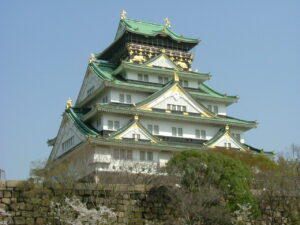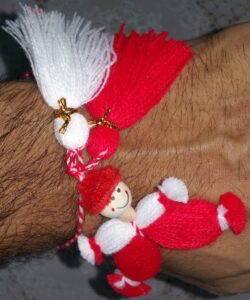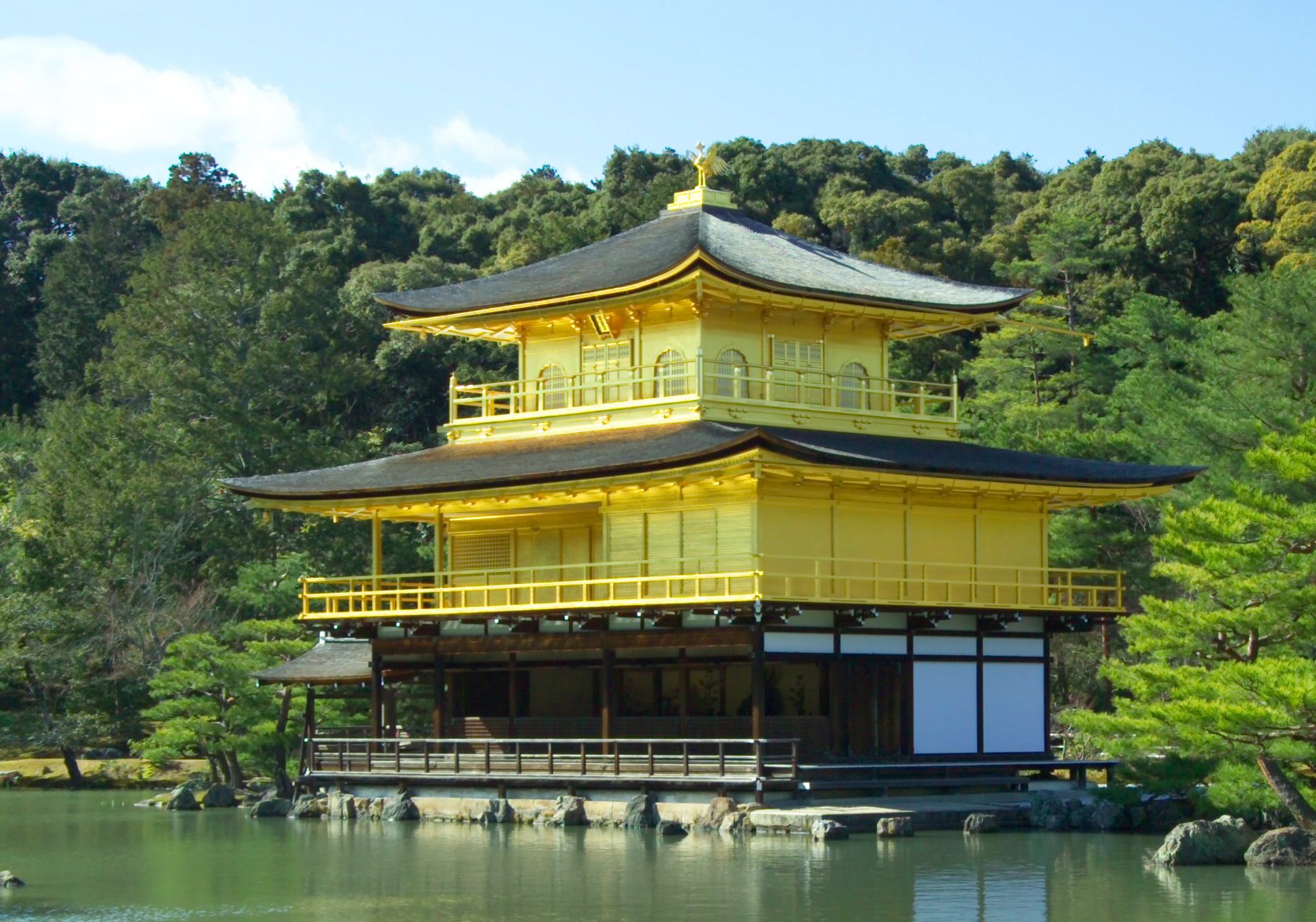
Kyoto is considered the cultural capital of Japan and a major tourist destination. It is home to numerous Buddhist temples, Shinto shrines, palaces and gardens, many of which are listed collectively by UNESCO as a World Heritage Site. Prominent landmarks include the Kyoto Imperial Palace, Kiyomizu-dera, Kinkaku-ji, Ginkaku-ji and the Katsura Imperial Villa. Kyoto is also sometimes called the thousand-year capital
LOCATED IN WESTERN KYOTO – CLOSE TO THE ENTRANCE TO THE TENRYU-JI TEMPLE
LOCATED IN WESTERN KYOTO – CLOSE TO THE ENTRANCE TO THE TENRYU-JI TEMPLE
LOCATED IN WESTERN KYOTO – CLOSE TO THE ENTRANCE TO THE TENRYU-JI TEMPLE
LOCATED IN WESTERN KYOTO – CLOSE TO THE ENTRANCE TO THE TENRYU-JI TEMPLE
- There was some consideration by the United States of targeting Kyoto with an atomic bomb at the end of World War II because, as an intellectual center of Japan, it had a population large enough to possibly persuade the emperor to surrender
- In the end, at the insistence of Henry L. Stimson, Secretary of War in the Roosevelt and Truman administrations, the city was removed from the list of targets and replaced by Nagasaki
- As a result, the Imperial City (Emeritus) of Kyoto is one of the few Japanese cities that still have an abundance of prewar buildings, such as the traditional townhouses known as machiya
- However, modernization is continually breaking down the traditional Kyoto in favor of newer architecture, such as the Kyōto Station complex
- The government of Japan is relocating the Agency for Cultural Affairs to Kyoto in 2021
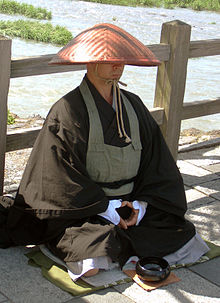
A monk by the Katsura River in Arashiyama
- With its 2000 religious places – 1600 Buddhist temples and 400 Shinto shrines, as well as palaces, gardens and architecture intact – it is one of the best preserved cities in Japan
- Among the most famous temples in Japan are Kiyomizu-dera, a magnificent wooden temple supported by pillars off the slope of a mountain
- Kinkaku-ji, the Temple of the Golden Pavilion
- Ginkaku-ji, the Temple of the Silver Pavilion
- Ryōan-ji, famous for its rock garden
- The Heian Jingū is a Shinto shrine, built in 1895 celebrating the Imperial family and commemorating the first and last emperors to reside in Kyoto
- Three special sites have connections to the imperial family
- The Kyoto Gyoen area including the Kyoto Imperial Palace and Sentō Imperial Palace, homes of the Emperors of Japan for many centuries
- Katsura Imperial Villa, one of the nation’s finest architectural treasures
- Shugaku-in Imperial Villa, one of its best Japanese gardens
- In addition, the temple of Sennyu-ji houses the tombs of the emperors from Shijō to Kōmei
- Other sites in Kyoto include Arashiyama
- The Gion and Pontochō geisha quarters
- The Philosopher’s Walk and the canals that line some of the older streets
UNESCO listed heritage sites in Kyoto
- The “Historic Monuments of Ancient Kyoto” are listed by the UNESCO as a World Heritage Site
- These include the Kamo Shrines (Kami and Shimo)
- Kyō-ō-Gokokuji (Tō-ji)
- Kiyomizu-dera
- Daigo-ji
- Ninna-ji
- Saihō-ji (Kokedera)
- Tenryū-ji
- Rokuon-ji (Kinkaku-ji)
- Jishō-ji (Ginkaku-ji)
- Ryōan-ji
- Hongan-ji
- Kōzan-ji and the
- Nijō Castle, primarily built by the Tokugawa shōguns
- Other sites outside the city are also on the list
- Kyoto is renowned for its abundance of delicious Japanese foods and cuisine
- The special circumstances of Kyoto as a city away from the sea and home to many Buddhist temples resulted in the development of a variety of vegetables peculiar to the Kyoto area
- About 20% of Japan’s National Treasures and 14% of Important Cultural Properties exist in the city proper
- The UNESCO World Heritage Site Historic Monuments of Ancient Kyoto (Kyoto, Uji and Otsu Cities) includes 17 locations in Kyoto, Uji in Kyoto Prefecture, and Ōtsu in Shiga Prefecture
- The site was designated as World Heritage in 1994
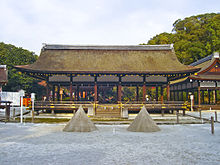 Kamigamo Shrine
Kamigamo Shrine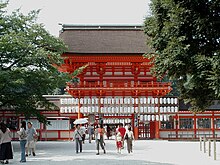
Shimogamo Shrine
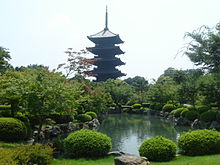
Tō-ji
 Kiyomizu-dera
Kiyomizu-dera  Saihō-ji
Saihō-ji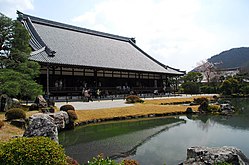 Tenryū-ji
Tenryū-ji Kinkaku-ji
Kinkaku-ji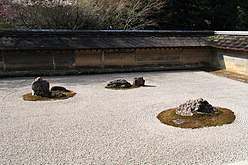 Ryōan-ji
Ryōan-ji
Nishi Honganji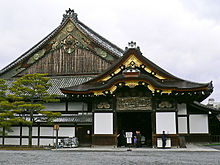 Nijō Castle
Nijō Castle
 Nijō Castle
Nijō Castle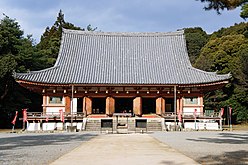 Daigo-ji
Daigo-ji Ginkaku-ji
Ginkaku-ji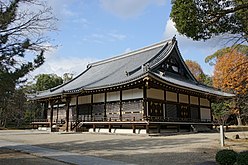
Ninna-ji

Kōzan-ji
What is the Fushimi Inari-taisha
 Torii leading to the outer shrine
Torii leading to the outer shrine
- Affiliation : Shinto
- Deity : Uka-no-Mitama-no-Ōkami, et al. as Inari Ōkami
- Type : Inari Shrine
- Date established : 711
- Fushimi Inari-taisha (伏見稲荷大社) is the head shrine of the kami Inari located in Fushimi-ku, Kyoto
- The shrine sits at the base of a mountain also named Inari which is 233 metres (764 ft) above sea level and includes trails up the mountain to many smaller shrines which span 4 kilometres (2.5 mi) and take approximately 2 hours to walk up
- Inari was originally and remains primarily the kami of rice and agriculture, but merchants and manufacturers also worship Inari as the patron of business
- Each of Fushimi Inari-taisha’s roughly thousand torii was donated by a Japanese business
- Owing to the popularity of Inari’s division and re-enshrinement, this shrine is said to have as many as 32,000 sub-shrines (分社 bunsha) throughout Japan

Front view of the haiden

A torii path across the mountain from the side

honden

The main gate
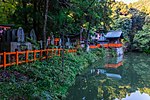


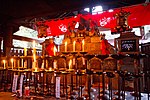
- The shrine became the object of imperial patronage during the early Heian period
- In 965 – Emperor Murakami decreed that messengers carry written accounts of important events to the guardian kami of Japan
- These heihaku were initially presented to 16 shrines, including the Inari Shrine
- From 1871 through 1946, Fushimi Inari-taisha was officially designated one of the Kanpei-taisha (官幣大社), meaning that it stood in the first rank of government supported shrines
What are the structures in the Fushimi Inari-taisha
- The earliest structures were built in 711 on the Inariyama hill in southwestern Kyoto, but the shrine was re-located in 816 on the request of the monk Kūkai
- The main shrine structure was built in 1499
- At the bottom of the hill are the main gate (楼門, rōmon, “tower gate”) and the main shrine (御本殿, go-honden)
- Behind them, in the middle of the mountain, the inner shrine (奥宮, okumiya) is reachable by a path lined with thousands of torii. To the top of the mountain are tens of thousands of mounds (塚, tsuka) for private worship
What are the rows of Torii gates ? The Senbon Torii ?
- The highlight of the shrine is the rows of torii gates, known as Senbon Torii
- The custom to donate a torii started to spread since the Edo period (1603 – 1868) to get a wish to become true or to thank for a wish that became true
- Along the main path there are around 1,000 torii gates
Fox
- Foxes (kitsune), regarded as the messengers, are often found in Inari shrines
- One attribute is a key (for the rice granary) in their mouths
- Unlike most Shinto shrines, Fushimi Inari-taisha, in keeping with typical Inari shrines, has an open view of the main object of worship (a mirror)
- A drawing in Kiyoshi Nozaki’s Kitsune : Japan’s Fox of Mystery, Romance and Humor in 1786 depicting the shrine says that its two-story entry gate was built by Toyotomi Hideyoshi
- The shrine draws several million worshipers over the Japanese New Year, 2.69 million for 3 days in 2006 reported by the police, the most in western Japan

Fox holding a key in its mouth, at the main gate of the Fushimi Inari shrine Fox holding a jewel in its mouth at the main gate of the Fushimi Inari shrine
Fox holding a jewel in its mouth at the main gate of the Fushimi Inari shrine Fox sculpture in Fushimi Inari-taisha shrine
Fox sculpture in Fushimi Inari-taisha shrine Fox fountain in Fushimi Inari-taisha shrine
Fox fountain in Fushimi Inari-taisha shrine
 Fox holding a jewel in its mouth at the main gate of the Fushimi Inari shrine
Fox holding a jewel in its mouth at the main gate of the Fushimi Inari shrine Fox sculpture in Fushimi Inari-taisha shrine
Fox sculpture in Fushimi Inari-taisha shrine Fox fountain in Fushimi Inari-taisha shrine
Fox fountain in Fushimi Inari-taisha shrineAnother view of the fox fountain


Fox altar in Fushimi Inari-taisha shrine
Access & Enviorons
- The shrine is just outside the Inari Station on the Nara Line of the West Japan Railway Company (JR), a five-minute ride from Kyoto Station
- It is a short walk from Fushimi-Inari Station on the Main Line of the Keihan Electric Railway
- The shrine is open 24 hours with both the approach to the shrine and the Honden (本殿, main hall) itself illuminated all night
- There is no entrance fee
- In the approach to the shrine are a number of sweet shops selling tsujiura senbei (辻占煎餅), a form of fortune cookie dating at least to the 19th century, and which are believed by some to be the origin of the American fortune cookie

